Europeans first set foot in South America sometime in the late 15th century, but it wasn’t until 1870 that Kaieteur Falls in Guyana were documented by non-native explorers. The falls are enormous. In fact, the 741-foot drop from top to base makes Kaieteur Falls the tallest single-drop waterfall in the world. Indigenous peoples knew of the waterfall for centuries, if not millennia. It features prominently in local folklore. These days, there’s an international airport less than a mile from the head of the Kaieteur Falls. You can book day trips to visit from Georgetown, the capital of Guyana. That such a magnificent natural wonder stayed hidden for so long is impressive. But its commercialization was inevitable. We have a habit of trammeling places that ought to be left alone.
When I parked at the trailhead of a remote spring creek in the Rockies in January 2021, I felt like I was watching the revelation of my personal Kaieteur Falls.
This particular spring creek is at the end of a one-way road, and the only way to get there is to know where you’re going. It’s not a place you’d just stumble across driving from one big Western river to another. It’s tucked away in a sheer canyon, an hour’s drive from cell service, and everyone who knows about it doesn’t publicly acknowledge its existence.
Or so I thought.
On that bitingly cold January day, with a fresh foot of snow on the ground and low clouds putting a ceiling on the otherwise endless sky, my truck wasn’t the only one at the trailhead. Four other vehicles were parked there, each bearing a license plate from a different state. I had the only local plates in the group.
My best friend Lander Crook was with me. For years I’d regaled him with tales of giant, stupid fish, epic hatches, and the kind of fishing you hear mostly old-timers croon about. To celebrate Lander’s birthday, I’d finally agreed to show him the creek, and so we made the half-day drive. Three hours into the trip, Lander wondered if we’d even have time to fish.
Now I was worried we wouldn’t have room to fish.
If you’ve ever been on a high-mountain stream that you know intimately, then you know how disappointing it is to fish the water behind someone else. In our case, we were behind two couples, and two lone anglers — six people total.
The creek isn’t long, but neither is a January day in the Rockies. We hoofed it as quickly as we could through the snow, walking a solid mile past the last human tracks that peeled off towards the water. This far down, I hoped, the creek would behave like the unpressured, carefree water it usually is.
For a while, the creek flaunted its stuff. I caught a fish on the first cast, and Lander lost a few of my flies in a tree before he got a rainbow to hand. We’d been there for a half-hour, caught two fish, and lost three flies. Not bad for a small stream in the Rockies in January with six people fishing upstream.
More than anything, the absence of people is what makes the spring creek such an attractive destination. Native Americans inhabited it seasonally, almost 2,000 years ago, and up until the 70s there wasn’t a regular American presence anywhere near it. The road going to the trailhead was all dirt until a few years ago, when a rockslide wiped out major portions on federal land. The decision was made to pave the road in the hopes of providing easier access. The feds have a vested interest in the road since they own and operate a few buildings near the trailhead.
During summer, when hatches of caddis, salmon flies, craneflies, and big mayflies all come off simultaneously, the creek is understandably crowded. A half-dozen people there on a Saturday in June or July isn’t cause for concern. But on those long summer days, you have the time to walk the entire length of the stream to where it dumps into the north end of a large reservoir. There’s room to stretch out, to not fish on top of each other.
Winter’s short days squeeze all anglers into the first couple miles of the creek. Within an hour of the first cast, Lander and I shook our heads in equal parts puzzlement and frustration. The fish were tucked deep into undercuts and any pool with good depth. They were spooked by their own shadow. Almost always, the trout lie exactly where you’d expect them to – at the ends of glides, in the riffles, on the seams, and in the eddies. It’s like fishing a stream straight out of an illustration in a beginner’s guide to fly fishing. Every bend in the river reveals another piece of classic trout water, and it’s suddenly easy to think that maybe the old-timers are right, and all the fish really were bigger back in the day.
Lander’s first foray to the creek ended abruptly when we rounded a corner and nearly walked into a guy and his girlfriend. He was teaching her how to fish, which was evident by his frustrated expression and her annoyed demeanor. Apparently, they’d spent the day beating the only stretch of river that’s open enough for proper fly casting.
Lander and I apologized for the accidental intrusion, got out of the river, and walked around the couple. We cut their tracks within a minute and realized they were the last set of boot prints we’d seen on our hike downriver. We’d fished a mile of stream and they’d fished maybe 100 yards.
No wonder the lady didn’t look too happy. I’d be upset too if I had to stand in virtually one spot in a place as gorgeous and provocative as the creek.
The trailhead was empty except for the vehicle I assumed belonged to the couple still on the water. The sun had dipped behind the canyon walls a few hours ago, and the last of the evening light burnt itself out in a cold flame of sharp orange and red. Nearly everyone else on the water had called it a day well before the temps dropped enough that the fish quit moving.
After a normal day on the creek, especially in the winter, the drive back to civilization is tense. The road is always covered in snow drifts, ice, and deer that aren’t aware that grass doesn’t grow on blacktop. Add some steep drop offs and hairpin turns, and you’re in for an anxiety-inducing ride.
The drive felt different that night. Instead of following my own tracks back out, I drove home in someone else’s ruts. My tracks from the drive in that morning had long since been overrun.

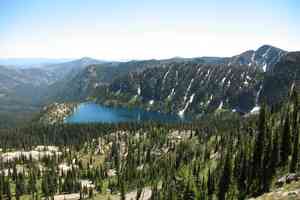
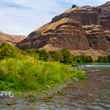

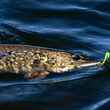
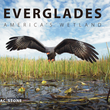
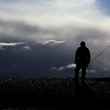
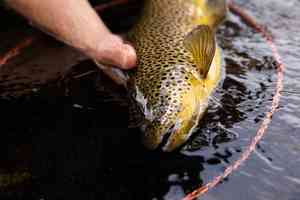
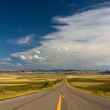
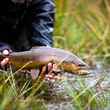
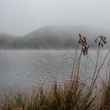
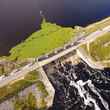
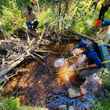
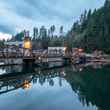
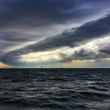

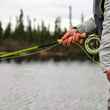



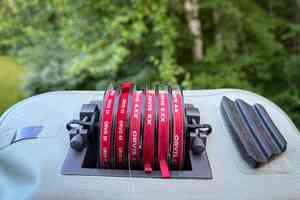
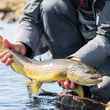
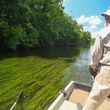
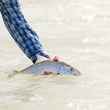

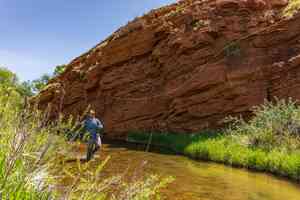
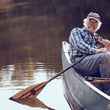
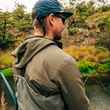

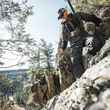
Comments
Luke replied on Permalink
Last time I was there I was sad to see the amount of people, it's just not worth it for me anymore. Beautiful place tho.
Stephen Maturin replied on Permalink
Welcome to the new reality. All of us had better get used to a more crowded and less wild world. Fly fishing is trendy again, and the mountain West is booming in population. Those of us old enough to remember the onslaught of the early 90's when "The Movie" know what it feels like, only this time it's worse. Now you can be haunted by waters and post about it on Instagram in real time.
Rak replied on Permalink
It seems everyone wants to experience, purchase, claim, gourge out their piece of the wild west, for a week or two.. We "country bumkins", "cowboys" residents have always known and respected where we live. But because a visiting author puts an article or story together about one of our locations, it is inundated with hords of people the next tourist season. Then the fish and wildlife are gone, the flowers and grasses are trampled, trees are vandalized with initials carved into them. Trash is left for someone else to pick up. When one place gets used up and resembles an alley from a big city, the hords move on to another location. Yes the west is being loved to death.
Pages